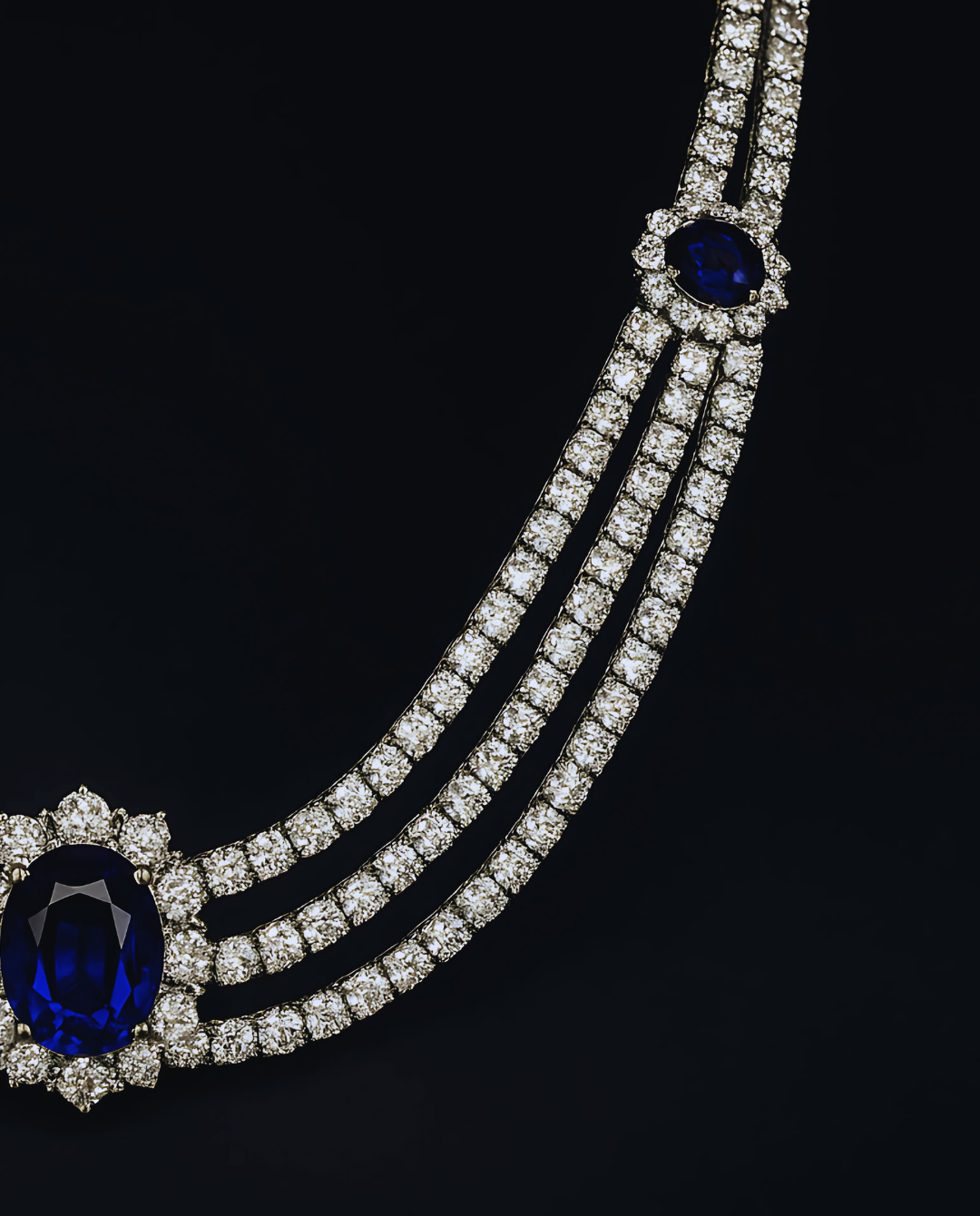For centuries, mined diamonds have symbolized luxury and elegance, adorning the jewellery of esteemed individuals. However, recent technological advancements have given rise to lab-grown diamonds, which are rapidly gaining prominence across various market segments. Whether you're an aspiring retailer or a passionate jewellery enthusiast, these 8 essential facts and statistics about lab-grown diamonds will provide you with valuable insights and serve as a foundation for further exploration.

Exclusive Use by Jewelers
As the demand for contemporary jewellery aligning with modern sensibilities grows, more jewellers opt to exclusively use lab-grown diamonds. Influential brands like Lark & Berry have made a clear commitment to sustainability and the changing times by using only lab-grown diamonds and gemstones in all their pieces. These diamonds are produced in environmentally conscious laboratories. Lab-grown diamonds offer identical quality and characteristics to mined diamonds. Jewellers leverage cutting-edge technology by specializing in lab-grown diamonds to create stunning pieces while preserving our planet's resources. Consequently, these gems are gaining popularity among discerning jewellery buyers seeking high-end alternatives with a guilt-free conscience.
Rarity, Price, and Quality
Mined diamonds are portrayed as rare in news blasts and advertising from mined diamond companies, but as the well-researched and acclaimed recent Netflix documentary “Nothing Lasts Forever” pointed out, the world is in over-supply of them. The mined diamonds industry as been oft-accused of artificially inflating the price of mined diamonds jewellery based on the false premise that said diamonds are rare.
Because lab-grown diamonds require no mining, the resulting jewellery is priced more fairly - and without any quality compromised, as lab-grown diamonds are the very same as mined diamonds.
Unveiling the Technology
Jewellers specializing in lab-grown diamonds rely on state-of-the-art technology, a feat that would otherwise take millennia to achieve. Techniques such as chemical vapour deposition (CVD) and high pressure/high temperature (HPHT) solutions are employed. These methods involve advanced equipment that manipulates molecular structures to produce diamonds. While this may sound like magic, it has been a reality since the 1950s, spearheaded by American electric giant GE (General Electric). Ongoing research aims to improve the energy efficiency of diamond growth in laboratories, potentially leading to even more sustainable production techniques.

Environmental Advantages
The environmental benefits of lab-grown diamonds are significant. Since these diamonds are created in a controlled laboratory setting, traditional mining practices and associated emissions are eliminated. No vast mining infrastructures or energy-intensive equipment are required. Additionally, lab-grown diamonds can be produced locally, reducing the distance between manufacturers and customers and contributing to a greener industry. The efficiency of lab-grown diamond production also helps control the cost per carat, ensuring both producers and buyers get excellent value. Given the current climate crisis, the eco-friendly credentials of lab-grown diamonds hold even greater importance.
Inclusions in Lab-Grown Diamonds
Contrary to a common misconception, lab-grown diamonds are not always structurally perfect and can have inclusions, similar to those found in mined diamonds. The manufacturing process replicates the natural conditions in which diamonds form underground, leading to the formation of inclusions within lab-grown gems. However, lab-grown diamonds are routinely purer than mined diamonds in the jewellery market, with only 2% of mined diamonds reaching the coveted Type IIa purity status, while virtually all lab-grown diamonds are rated that highly.
Regulations and Consumer Protection

Different countries have regulations governing the sale and marketing of lab-grown diamonds. For instance, in the UK, the National Association of Jewellers (NAJ) has established guidelines to ensure accurate labelling and identification of diamonds, be they mined or lab-grown. These regulations have been met with controversy since lab-grown diamonds are exactly the same as mined diamonds. And in the US, the FTC (Federal Trade Commission) ruled in the last few years that the “synthetic” descriptor wasn’t a requirement any longer in lab-grown advertising, as there’s a connotation of “fake” with that word, and lab-grown diamonds are of course every bit as real as mined diamonds.
There’s also a misconception, often perpetuated by mined diamonds loyalists, that lab-grown diamonds proponents are trying to hide that their diamonds are lab-grown, when in fact, there are a growing number of brands (Lark & Berry is a very early and influential example) who are proud of only using lab-grown, and make it a highlight of advertising. After all, the market share for lab-grown keeps growing every year, as more consumers wish to lead more sustainable lives.
More young couples are buying lab-grown engagement rings - why not be part of a growing, positive trend?

Recent studies have shown a significant increase in the popularity of lab-grown diamonds among young couples. According to a 2018 survey by MVI Marketing LLC, 70% of millennial-aged consumers would consider buying a lab-grown alternative to reduce the carbon footprint, deforestation and wildlife habitat loss associated with traditional diamond mining, as well as ease concerns about child labour and other human rights abuses in the global mining industry. That 70% figure now, in 2023, is only thought to be increasing.
Possibly the most important fact, saved for last: Buying lab-grown is the only way you can know 100% your diamond is conflict-free, as issues, though less than in the past, continue to proliferate in the mined diamond trade.
A glance at Netflix's current documentary offering "Nothing Lasts Forever," which highlights ongoing issues with diamond cartels, says it all - you could still wind up with a less than savoury diamond regarding the ethics in its sourcing when you buy mined. One of the primary advantages of lab-grown diamonds is their guarantee of being conflict-free. Mined diamonds have long been associated with the issue of "blood diamonds," which are diamonds that are sourced from regions plagued by violence and human rights abuses. These diamonds often finance armed conflicts, civil wars, and other illegal activities.
In contrast, lab-grown diamonds are created in a controlled laboratory setting, ensuring complete traceability and transparency in their production. These diamonds are made using sustainable and environmentally responsible methods, which greatly reduces the ecological impact compared to traditional mining. Since they are grown under controlled conditions, there is no risk of human rights abuses or unethical practices associated with their production.
The popularity of lab-grown diamonds is poised to continue its ascent due to their numerous advantages. Jewellers must recognize the potential of lab-grown diamonds to meet the increasing consumer demand. By embracing this trend, they can create exquisite jewellery pieces while contributing to a more sustainable and environmentally conscious industry. Lab-grown diamonds have become a symbol of responsible luxury, offering a compelling alternative that combines elegance, quality, and ethical sourcing.



